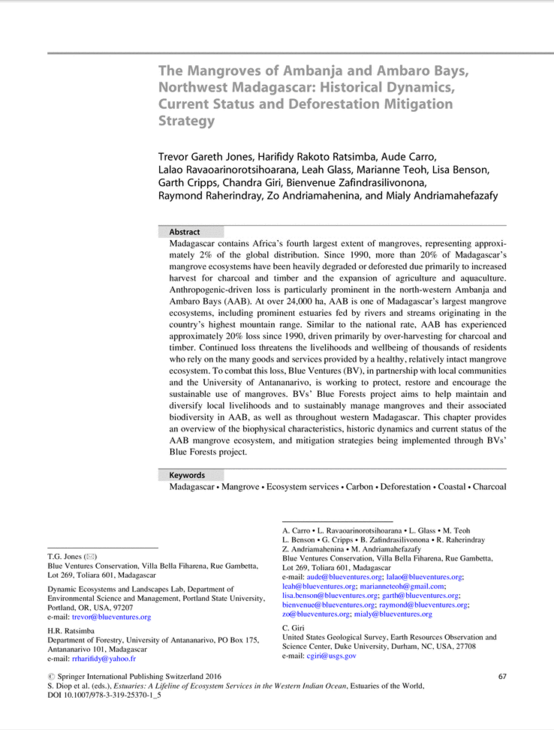Abstract
Madagascar contains Africa’s fourth largest extent of mangroves, representing approximately 2% of the global distribution. Since 1990, more than 20% of Madagascar’s mangrove ecosystems have been heavily degraded or deforested due primarily to increased harvest for charcoal and timber and the expansion of agriculture and aquaculture. Anthropogenic-driven loss is particularly prominent in the north-western Ambanja and Ambaro Bays (AAB). At over 24,000 ha, AAB is one of Madagascar’s largest mangrove ecosystems, including prominent estuaries fed by rivers and streams originating in the country’s highest mountain range. Similar to the national rate, AAB has experienced approximately 20% loss since 1990, driven primarily by over-harvesting for charcoal and timber. Continued loss threatens the livelihoods and wellbeing of thousands of residents who rely on the many goods and services provided by a healthy, relatively intact mangrove ecosystem. To combat this loss, Blue Ventures (BV), in partnership with local communities and the University of Antananarivo, is working to protect, restore and encourage the sustainable use of mangroves. BVs’ Blue Forests project aims to help maintain and diversify local livelihoods and to sustainably manage mangroves and their associated biodiversity in AAB, as well as throughout western Madagascar. This chapter provides an overview of the biophysical characteristics, historic dynamics and current status of the AAB mangrove ecosystem, and mitigation strategies being implemented through BVs’ Blue Forests project.

















